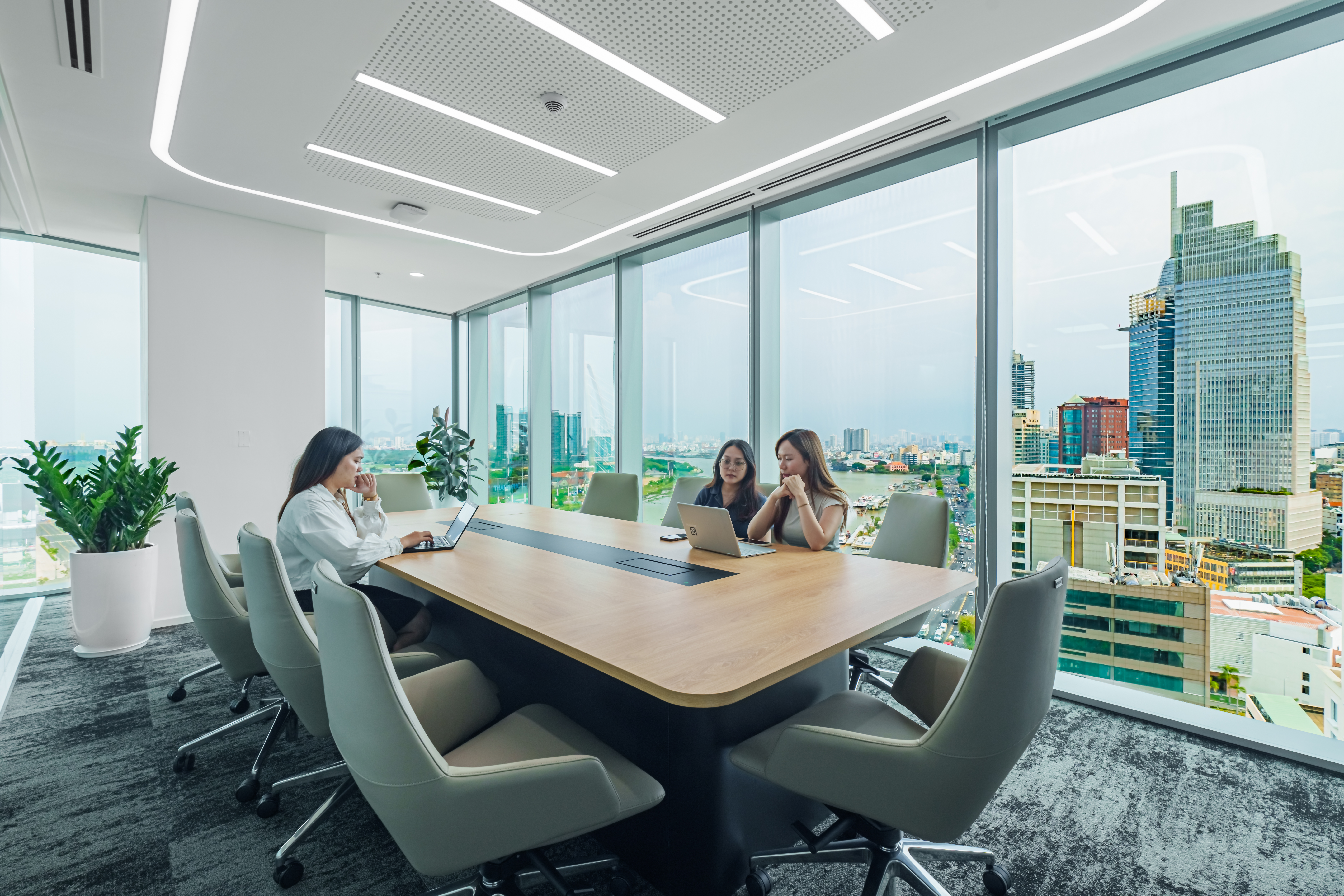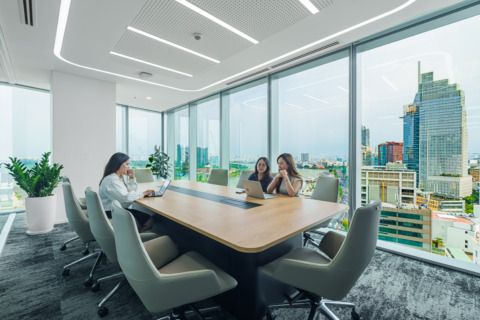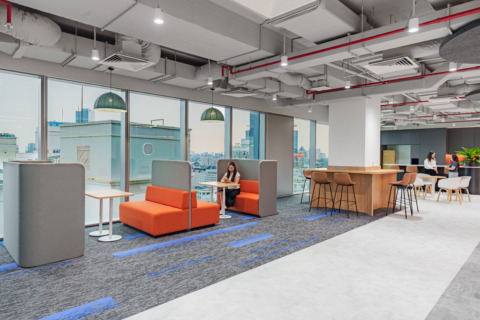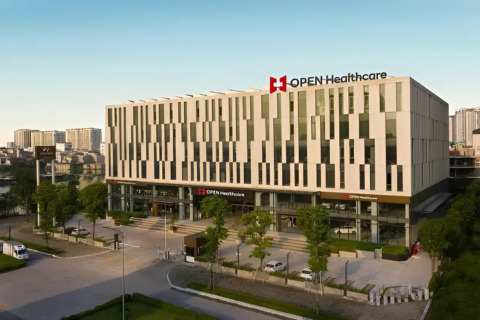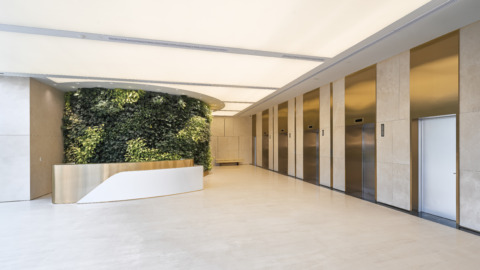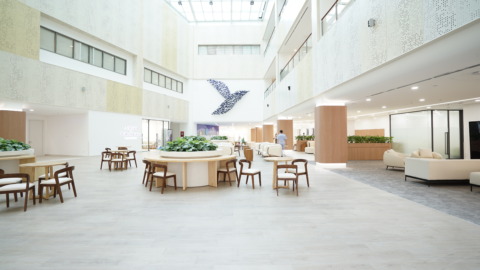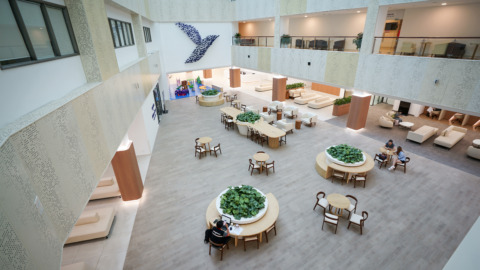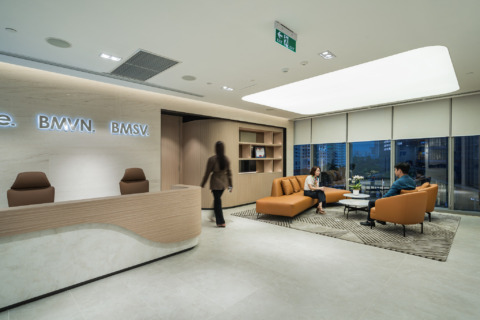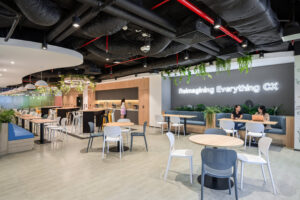Wellbeing is no longer a workplace trend, it’s the new foundation of business performance. Discover how human-centered design is shaping the next generation of workspaces.
As the boundaries between work and life continue to blur, companies are rethinking how space can care for people. Huynchi explores how wellbeing-driven design is transforming the modern workplace, from aesthetics to strategy.
The way we define a “good office” has changed.
It’s no longer about square meters, statement furniture, or even aesthetics — it’s about how a space makes people feel.
Across industries, leaders are realizing that wellbeing is not just about comfort; it’s about connection, trust, and sustainable performance. In the future of work, spaces must do more than serve, they must care.
From Perk to Performance Driver
Wellbeing used to be a nice-to-have. Today, it’s a core business strategy.
A workspace that supports physical, mental, and emotional balance helps people perform at their best.
It’s where stress drops, creativity rises, and culture thrives.
According to Leesman’s 2024 global workplace survey, nearly 40% of employees feel their current work environment does not support their wellbeing. That gap represents not just discomfort, but lost potential — a missed opportunity to turn design into a driver of human energy.
At Huynchi, we see design as a tool for enabling people — not just accommodating them.
What Does a Caring Workplace Look Like?
In Vietnam, more organizations are rethinking their offices — shifting focus from “brand presence” to human experience.
That shift is visible in design decisions that blend empathy with efficiency:
- Natural light and ventilation that sustain energy throughout the day.
- Greenery and natural materials that reconnect people to calmness and nature.
- Thoughtful acoustic control that balances focus and collaboration.
- Thermal comfort zones that respond to different working modes.
- Recharge corners — microspaces for reflection, casual chat, or simply breathing.
When these elements work together, the result is a workplace that doesn’t just function — it feels alive.
Wellbeing as a Competitive Advantage
The post-pandemic workplace is about trust, choice, and care. And the companies that get this right are seeing tangible results. Research shows that organizations investing in employee wellbeing enjoy:
- Up to 30% higher retention,
- Measurable gains in focus and accuracy,
- And stronger alignment between people and company purpose.
In other words, wellbeing is now part of a company’s competitive edge, especially in attracting and retaining top talent. Designing for wellbeing isn’t about luxury; it’s about building resilience, in both people and business.
Huynchi’s Perspective: Designing for People, Not Just Spaces
For Huynchi, wellbeing is not a design feature, it’s a design philosophy.
From concept to construction, every detail matters: how daylight enters a meeting room, how movement flows through open spaces, how texture and tone shape comfort. Each choice is guided by a simple but powerful question:
“Will this space help people feel better, and work better, every day?”
We believe that when people feel supported, they create better work, stronger relationships, and more meaningful experiences. That’s why we design spaces that care.
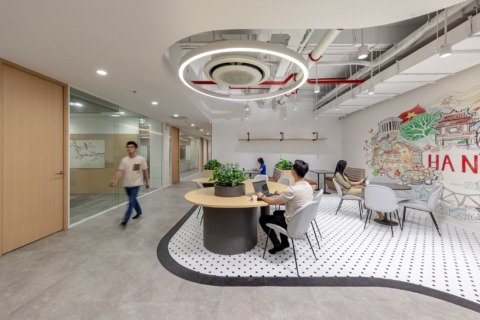
Looking Ahead
As hybrid work evolves and employee expectations grow, the future of workplace design will belong to those who see space as more than structure, as a living system that supports human potential.
Because the workplaces of tomorrow won’t just be smart or sustainable. They’ll be kind.
